





Skid Resistance
Loss of control through skidding can be a significant factor in many crashes (especially when the road is wet). Particular attention should be paid to the skidding resistance properties of the carriageway surface at areas where braking commonly occurs such as on the approaches to intersections, roundabouts, pedestrian crossings and on bends or steep grades.
Poor skid-resistance can occur when the road surface becomes worn (aggregate becomes polished) under the action of traffic, or temporarily if there is a build-up of oil or debris on the road or if road drainage is poor. There are two main options for treatment of low skid resistance:
Retexturing This method includes the mechanical reworking of the existing surface to improve its frictional characteristics and therefore the resistance to skidding. Typically involves the removal of material from the road surface. Methods include diamond grooving, shot-blasting, bush hammering, high velocity water blasting.
Resurfacing These include relatively low cost thin surfacing treatments that not only improve the surface texture and resistance to wet road skidding but can also seal the surface against water penetration and arrest disintegration of the existing road surface.
Surface dressing for example, uses a bitumen emulsion sprayed onto the road surface followed by a layer of chippings with a high Polished Stone Value (PSV).
High friction surfacing (HFS) utilizes refractory grade calcined bauxite, an extremely hard wearing aggregate (with a high PSV) that provides and maintains good skid resistance. HFS systems may be based on either thermoplastic (hot-lay) or thermosetting (cold-lay) resin binders.
Porous friction course is a very permeable asphalt layer with continuous voids to accommodate runoff of low to moderate intensities of rainfall. The material improves skid resistance at high traffic speeds, limit water sprays, and reduce the possibility of aquaplaning.
- Improved safety for roads where a lot of crashes happen, especially in wet weather.
- Can help to prevent both rear-end and run-off road crashes.
- Resurfacing provides an opportunity to fix other road surface problems, such as crossfall and rutting.
- Provides the opportunity for adding or replacing road surface delineation such as painted markings or reflective road studs.
- Can extend life of pavement surface.
- Retexturing has environmental benefits over some traditional hot mix asphalt resurfacing. Typically lower cost and lower energy solution.
- Often quick and repeatable treatments with low traffic disruption. In most cases roads can be driven on immediately after application.
- Skid resistance improvements gained by retexturing and resurfacing will lessen over time, especially on roads with lots of heavy vehicle traffic and in tropical climates. As such, regular monitoring of skid resistance is important.
- The skid resistance of the entire road surface (right up to the edge) should be maintained for the safety of bicycles and other slow-moving vehicles.
- Warning signs should not be considered a solution to the problem of poor skid resistance. Warning signs can be used temporarily, until other solutions are carried out.
- Existing road surface must be sound, therefore pre-patching and repairs may be necessary prior to application.
- These treatments will not typically add any strength to the road pavement.
The Star Rating Demonstrator is a freely available tool with the iRAP online software, ViDA. With the Star Rating Demonstrator, it is possible to explore the impact that this Safer Roads Treatment has on risk.
Treatment Summary
Costs | Low to medium |
Treatment life | 5 years - 10 years |
Potential casualty reduction | 25-40% |
Case Studies
| Examples of related Case Studies |
|---|
| Preventing aquaplaning phenomenon through technical solutions |
Related Images
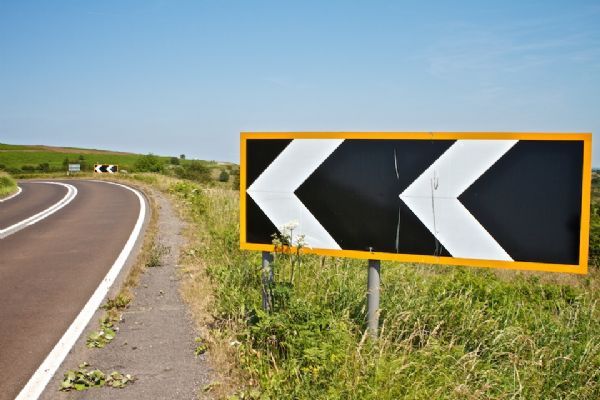 A high friction surface (HFS) has been applied at this hazardous location to improve skid resistance, A621 UK. Image credit: Unknown
A high friction surface (HFS) has been applied at this hazardous location to improve skid resistance, A621 UK. Image credit: Unknown A high friction surface has been applied on both approaches to the intersection - A621 UK. Image credit: Unknown
A high friction surface has been applied on both approaches to the intersection - A621 UK. Image credit: Unknown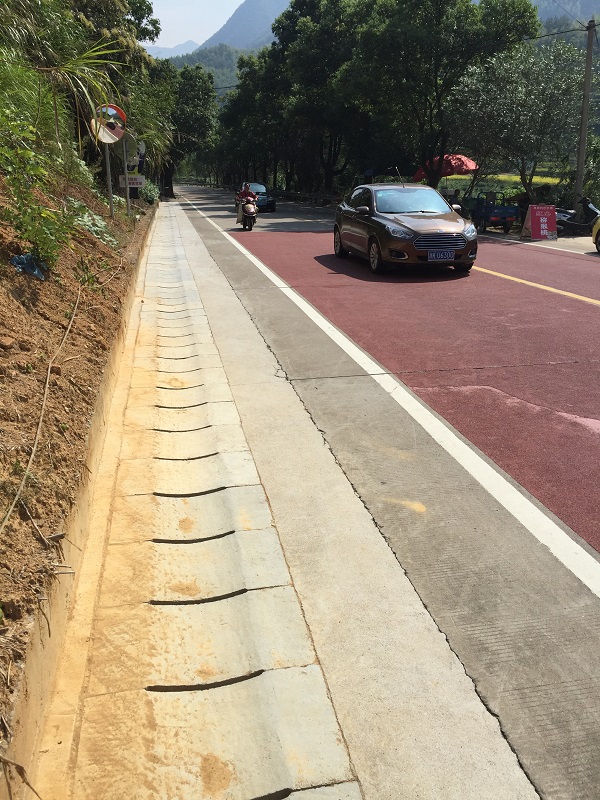 Covered drain and coloured skid-resistant pavement in China. Image credit: Greg Smith
Covered drain and coloured skid-resistant pavement in China. Image credit: Greg Smith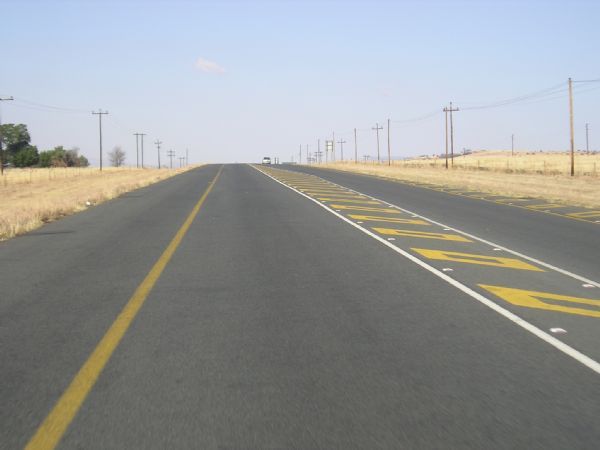 Good road surface South Africa. Image credit: iRAP
Good road surface South Africa. Image credit: iRAP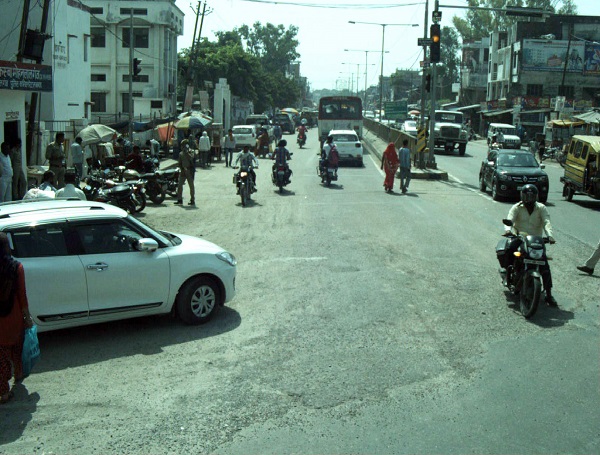 Poor road surface condition. The surface has loose gravel which affects skid resistance. Image credit: IndiaRAP
Poor road surface condition. The surface has loose gravel which affects skid resistance. Image credit: IndiaRAP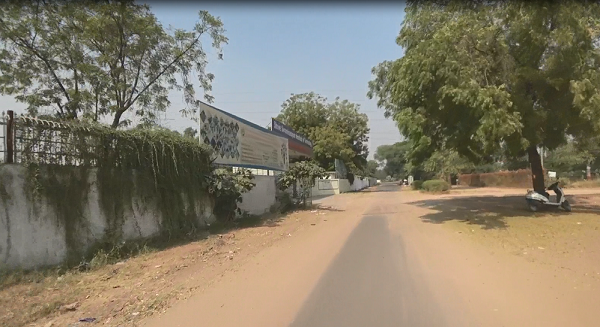 Loose sand on pavement causing poor skid resistance. Image credit: IndiaRAP
Loose sand on pavement causing poor skid resistance. Image credit: IndiaRAP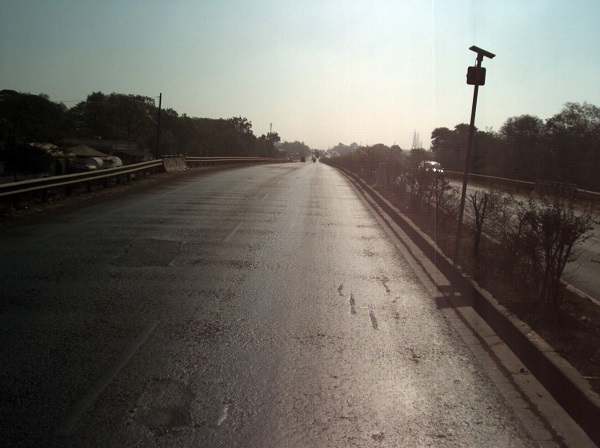 Pavement with poor skid resistance on a National Highway in India. Image credit: IndiaRAP
Pavement with poor skid resistance on a National Highway in India. Image credit: IndiaRAP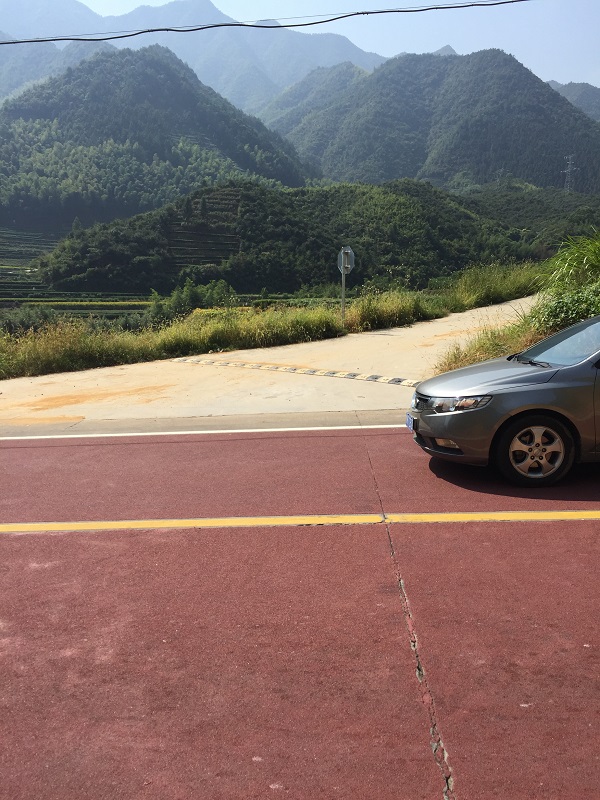 Speed hump on side road and skid resistant pavement treatment in China. Image credit: Greg Smith
Speed hump on side road and skid resistant pavement treatment in China. Image credit: Greg Smith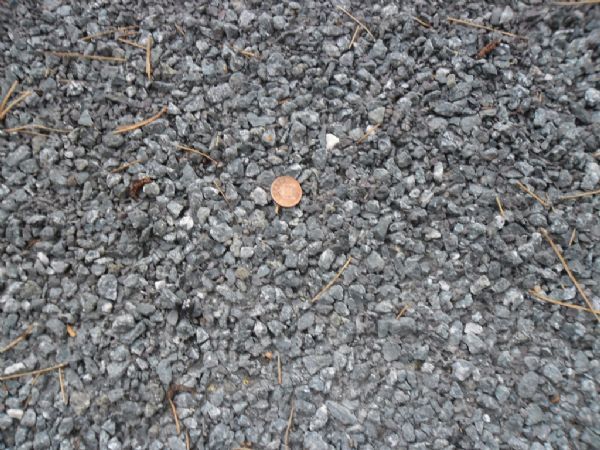 Surface dressing. A typical low cost surface treatment. Surface consists of chippings spread and rolled into a film of sprayed bitumen. Note 1 pence coin is 20mm diameter. Image credit: Luke Rogers
Surface dressing. A typical low cost surface treatment. Surface consists of chippings spread and rolled into a film of sprayed bitumen. Note 1 pence coin is 20mm diameter. Image credit: Luke Rogers










